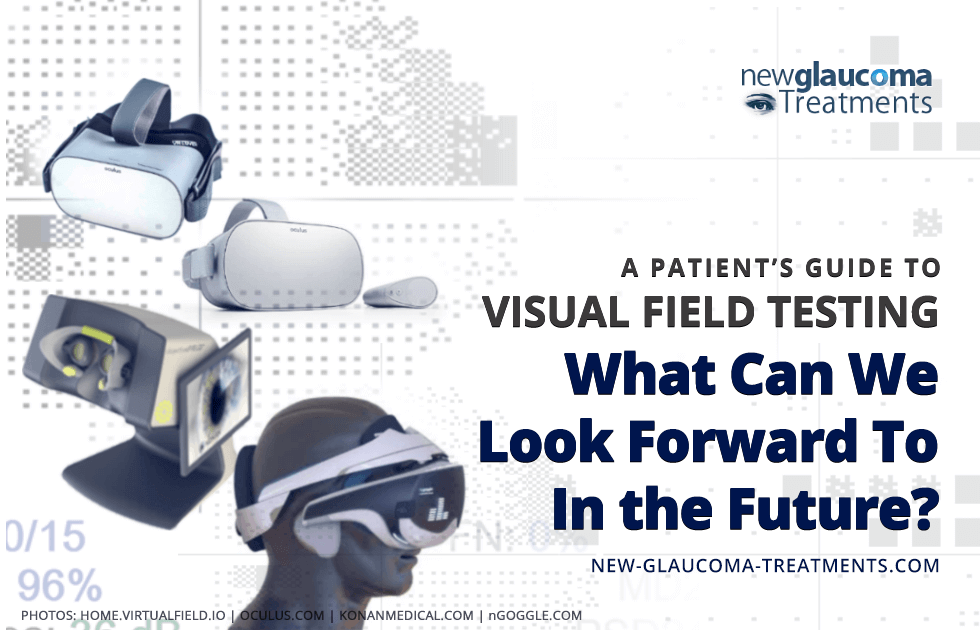A Patient’s Guide to Visual Field Testing

Part 2: Objective Visual Field Testing
As exciting as virtual reality may be with regard to portability and interactivity, all VR visual field strategies currently in development still require the individual being tested to react to the stimulus. In other words, the person being tested still has to do something to tell the machine that the stimulus has been seen. What if all one had to do was look at a spot on a screen while the testing unit did all the work? Sound like science fiction? I certainly thought so. However, the technology to do this has not only been developed but may be available for use in medical offices as early as 2019.
KONAN Medical objectiveFIELD™
As of this post, KONAN Medical has announced the near-future availability of the objectiveFIELD™ visual field analyzer. Although, unlike VR headsets, it is a table-top device that is not at all portable, it has a major advantage over the VR testing currently in development. It does not require any response from the person being tested: no button presses, no head movements. This removes one of the largest causes of poor quality testing: the patient response. It additionally removes the greatest source of patient stress and dislike for automated perimetry: wondering whether one is doing well during the test.
I had the opportunity to try out the objectiveFIELD™ visual field analyzer at a recent ophthalmology conference. Not only was the testing stress-free, it was somewhat relaxing. During the testing an ever-changing series of petal-shaped patterns is displayed in the visual field. I found this to be mesmerizing in the same way a kaleidoscope captures one’s attention. If this technology really works as well as current automated perimetry at both detecting and monitoring glaucoma (and assuming it is not priced beyond reason) it will be welcomed by both patients and their doctors. That, however, is a big “if”.
VIDEO: Dr. David Richardson trying out the KONAN Medical objectiveFIELD™. The device detects visual field loss by tracking pupil responses to patterns of light. There is no need to look around or click buttons. All that is required of the patient is to focus on a small red cross in the middle of a screen while a seemingly random pattern of lights are displayed in front of each eye.
NGoggle
NGoggle (which is still in development) holds the potential of combining both the benefits of a virtual reality headset and objective measurements of the visual field. Essentially, visual stimuli are displayed on the VR screen while brain activity is measured using EEG electrodes placed over the head of the individual being tested. These electrodes detect a specific pattern of activity when an object on the screen is above the threshold of vision[1].
Summary of What’s to Come in Visual Field Testing
The patient experience of visual field testing and the results obtained have not substantially changed in almost half a century. However, that may be changing soon. Virtual reality may be able to address many of the issues with poor patient experience. Newer technology that allows for objective measurements of the visual field could substantially improve the quality of the test results. It will probably take another decade for either of these newer technologies to “unseat” the current automated perimeters from their thrones. That should not, however, detract from the fact that patients may soon have options for testing where none previously existed.
References:
[1] https://www.mdlinx.com/ophthalmology/top-medical-news/article/2019/01/29/7554984/
Related Articles:
- Visual Field Testing – Why We Do It
- Visual Field Testing – What It Is
- Visual Field Testing – When it Should be Done
- Visual Field Testing – How It Fits In With Other Glaucoma Testing
- Visual Field Testing – How to Get the Most Out of Your Visual Field Test
- Visual Field Testing – What Can We Look Forward to in the Future? | Part 1

David Richardson, MD
Medical Director, San Marino Eye
David Richardson, M.D. is recognized as one of the top cataract and glaucoma surgeons in the US and is among an elite group of glaucoma surgeons in the country performing the highly specialized canaloplasty procedure. Morever, Dr. Richardson is one of only a few surgeons in the greater Los Angeles area that performs MicroPulse P3™ "Cyclophotocoagulation" (MP3) glaucoma laser surgery. Dr. Richardson graduated Magna Cum Laude from the University of Southern California and earned his Medical Degree from Harvard Medical School. He completed his ophthalmology residency at the LAC+USC Medical Center/ Doheny Eye Institute. Dr. Richardson is also an Ambassador of Glaucoma Research Foundation.


